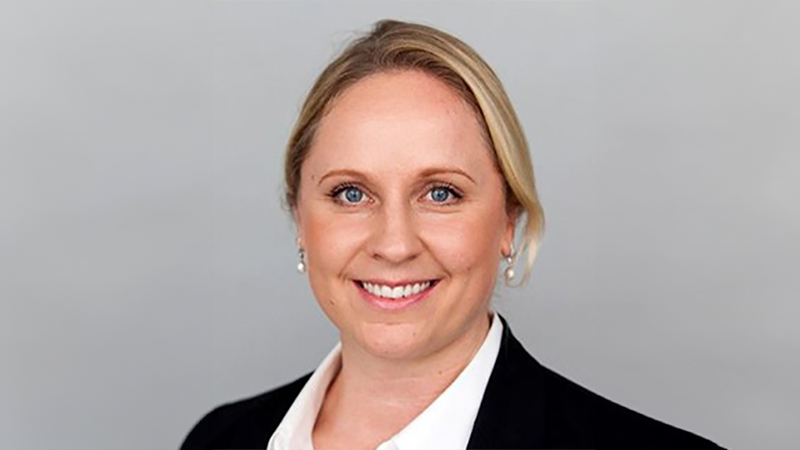After sitting down with him for even a few minutes, though, it is clear this is far from the truth. Indeed, his lengthy tenure belies two decades spent building and refining a process designed as much as possible to remove the risk from investing.
Wilson designed the risk-targeted solution upon which Towry’s investment thesis is built in 2004 and he and his team have been refining it ever since.
It is a strategy that has, at its heart, a desire to ensure the group’s clients take not an iota more risk than is absolutely necessary to get from point ‘A’ of their lifetime financial plan, to point ‘B’. And, Wilson hastens to add, it is that lifetime financial plan that is part of Towry’s DNA.
All of Towry’s investment clients are financial planning clients. While a risk-targeted approach to investing – one that focuses on the risk a client can afford to take rather than a specific performance outcome – is by no means the only way to manage money, it is one that works very well if one already has a lifetime financial plan that has been worked on with a financial planner.
Trio of key risks
According to Wilson, irrespective of one’s investment philosophy, there are only three risks when it comes to investing money: losing one’s original capital, generating returns below inflation and thus a loss of real purchasing power and the opportunity cost of successful investments not taken.
“There are two important things at the back of my mind. The loss of the capital we have been given and the loss of real purchasing power,” Wilson explains.
“Towry clients generally are one of two things, either they are already wealthy and thus they don’t need to take excess risk or they are elderly and living off one pot of money and can’t afford to take excess risk.
“In both cases, the opportunity cost of potential profits missed is the one they can most bear. They can afford to miss out on an opportunity if it would mean taking excess risk on their original capital.”
Low-risk challenges
One of the key challenges in recent years for all cautious managers has been the difficulty of finding an adequate yield for low-risk clients because such portfolios have tended to have a rather high weighting to bonds. And, as Wilson admits, “with bonds reaching record levels and potentially being a lot more vulnerable on the downside than they are on the upside, one starts thinking, ‘Is my cautious portfolio now actually quite aggressive?’” To date, this bull market in bonds has continued to run, surprising many, including Wilson, who has been positioned for a change in the bond cycle for some time, but he believes it is going to change at some point.
“This is really the key question that low-risk investors are going to have to grapple with, ‘What is most important to me, a low variability of return or generating a real return above inflation?’
There has not been much inflation lately, but one would assume that at some point inflation will pick up and a cautious profile is not going to beat inflation when that happens, because bond yields are so low and will likely offer negative real yields going forward.”
Despite this looming inflection point, Wilson says he has done rather little to the portfolios this year, because they are already positioned for the change. The portfolios already have a low exposure to bonds and low duration, so are well positioned for a turn in interest rates.
Apropos the outlook for equities, he say his view is “neutralish” and he is thus not in a position where he is forced to do anything. What is more, because everything has been moving largely in tandem throughout this year, there has been little in the way of rebalancing necessary.
“These are process-driven rather than outcome-driven portfolios. We are not chasing performance. So, as long as we are managing risk, we are doing what we need to do,” he says.
He elaborates by pointing out: “If you have a good process that is strong, robust and repeatable, you tend to find that you do not have that many decisions to make and the decisions you do have to make are relatively easy. If you are trying to run an outcome-focused, return-driven portfolio, you constantly need to make lots of decisions and they are often difficult ones.”
Underlining the point, he adds: “At the end of the year, if we have returned 50%, chances are we should be sacked because we have taken more risk than we agreed we would.”
While the term ‘multi-asset’ has become somewhat of a buzzword recently, Wilson is quick to point out that for a portfolio to really be called that, it needs to be more than an equity fund with a smattering of fixed income exposure.
And, although he admits to being aggravated by the overuse of the term, he agrees that true multi-asset exposure is less of a unique selling point than it once was, but he is careful to point out that the group has been involved in the space since 2004.
“These are true multi-asset, multithe strategy, all-terrain vehicles, designed investors, the only to be permanently invested in the market.
They ought to perform through all market conditions,” he says.
“Usually, because they are invested in a number of asset classes, there is one that has performed well that you can take profit from and then add to another position that has done poorly, which allows us to sit back and invest through the cycle.”
Alternative investments
At the moment, because equities are not cheap and bonds are expensive the group is looking more closely at investment in non-traditional alternative strategies.
Towry has always had a strong bias toward this area, Wilson says, but at present its holdings are up at record levels – in the region of about 25-30% across all the portfolios. At the moment, Wilson says, the group’s holdings are focused on managed futures and long/short equity.
He explains: “When traditional beta is expensive, it makes sense to buy strategies because they are by definition neither cheap nor expensive, they are not dependent on positive market direction.
“However, as and when traditional beta becomes less expensive, we would expect to build that exposure back up again and our non-traditional exposure will come down; it is like a release valve for when other things are expensive.”
For the past five or six years, investors have been frequently calling the top of the equity market but predictions have fallen flat. Wilson’s view is that for long-term strategy, all-terrain vehicles, designed investors, the only danger is when valuations and sentiment start to get out of sync.
Leveraged equities
While not there yet, he is concerned by the lack of bears in the market at the moment.
“Valuations are starting to look toppy, particularly because there remains very little revenue growth in the market,” he explains.
“If that revenue growth does not come through between now and the end of the year, the market is going to be running on fumes and if earnings do come through, interest rates will go up. So, on average it looks more like a lose-lose for markets than a win-win.”
Wilson is also rather concerned about the number of buyers on margin, which he says has returned toward record levels in the US again.
“My biggest concern is that the next big correction in the market (which there will be at some point) will be much more serious than it needs to be because all the people investing on margin are already levered up to the hilt and so cannot come in to support the market. Instead, they will be hit by margin calls and because the market is dominated by high-frequency traders and algorithms that will just pick it up and run off with it down a black hole if they can, the next correction will be severe.”
However, he concludes: “While I am worried the next correction will be very serious, as a multi-asset investor I have to see the opportunity and having a relative value contrarian process should help us to do what we need to do to take advantage of it.”










